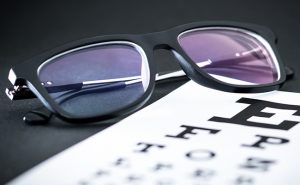
When vision is affected by astigmatism, cataracts, or some other eye condition, there are viable solutions that range beyond eyeglasses or contact lenses. Today, we have a wealth of innovative technology that allows us to restore crisp vision and depth perception so that you can see well and live well. Surgical vision solutions using an intra-ocular lens are safe and effective. The traditional IOL is the monofocal lens that focuses light to a single point. Multifocal lenses, on the other hand, will have several points of focus. For instance, a multifocal lens has a point of focus at a distance, and one that is near. The benefit of this type of intra-ocular lens is light is focused both near and far simultaneously, thus creating the best possible vision. A popular choice among our Laguna Hills patients, multifocal lenses are not identical to the natural lens of the eye. When we are young, our lenses are flexible and change shape as we focus on objects near and far. Lenses become less flexible as we get older, which impacts vision. The multifocal lenses used as intra-ocular implants are more rigid as well, however they allow for multi-point visualization. Multifocal lenses may be refractive or diffractive. Each type is intended to facilitate clear vision up-close and at a distance, but each has its own characteristics. Diffractive multifocal IOLs allow clear vision at near and far distances and are suitable in a number of scenarios. Those who spend a lot of time reading a computer screen report the need to increase font size or move closer to the screen for better reading ability, showing that diffractive lenses may not produce optimal intermediate vision. Diffractive lenses may produce more glare around light, making night driving more challenging until the lenses become more familiar. Refractive multifocal IOLs lead to improved vision at intermediate and farther distances. Reading small print may remain challenging, however, in poor lighting conditions. To facilitate optimal near vision, one needs good lighting, and some patients wear reading glasses or a prescribed near-vision eyeglass lens. Similar to diffractive lenses, the refractive lens may also produce halos, or glare around lights, an occurrence that usually becomes less noticeable over time. Correcting vision with laser surgery and laser-assisted cataract surgery have become increasingly popular in recent years. The procedures and materials used continue to improve and allow us to help our patients enjoy excellent results and prolonged vision. Contact us to arrange for your eye exam or consultation for corrective treatment. The diffractive multifocal lens
CALL OUR OFFICE FOR MORE INFORMATION
(949) 441-5444 The refractive multifocal lens
Share This Article
Back to Multifocal lenses Page










